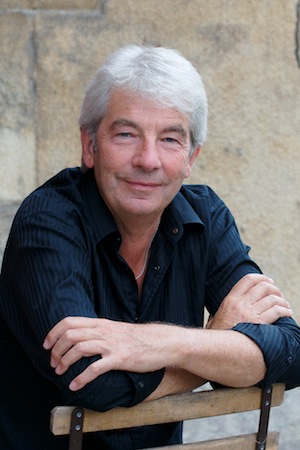Camille Saint-Saëns wrote five piano concertos, all of which give hearty Romantic piano-concerto satisfaction upon even a casual listen, but only the second has achieved much of a foothold in the repertory. The Baltimore Symphony Orchestra showed enterprise in programming the third concerto for their concerts last weekend, including Saturday’s edition at the Music Center at Strathmore. They also showed wisdom in getting Jean-Philippe Collard to do the solo work and Carlos Kalmar to guest-wield the baton.

Collard knows as much about Camille Saint-Saens’ piano concertos as anyone, having recorded a well-regarded set of all five with André Previn back in the late ’80s. (It’s nine bucks now and well worth it.) On Saturday night, he seemed to have the overall map of the third concerto in his head as well as the tiny details of articulation. (He actually played with a score, but he turned the pages himself and didn’t look at it a whole lot.)
The concerto begins with a murmuring figure from the piano, over which the horns and winds loft the first statement of the main theme; in Collard’s hands, this figure held portents, with a golden tone suggesting treasures to come. The BSO solosists responded with equally sensitive playing. When Saint-Saëns called upon the pianist to quicken the pulse, Collard brought the theme out clearly from the thicket of forbiddingly difficult chords the composer wrote for himself to play.
Throughout, Collard showed ample facility at virtuoso pyrotechnics, but whenever possible he preferred to caress his notes, creating anticipation and moments of poetic stillness without losing forward momentum. Yet when playing with the orchestra, he stayed at tempo, and Kalmar and the orchestra did a great job playing with Collard. The Andante second movement felt like one sustained breath, the BSO and Collard taking turns safeguarding the hushed atmosphere until it felt disappointing that the catchy finale theme had to come in. Collard made the most of his statements of that theme, pausing for that delicious split-second to really swing the melody hard. He got called back three times by an applauding audience, and he deserved it.
Kalmar, music director of the Oregon Symphony and no stranger to the Baltimorean podium, has become known for (among other things) idea-driven, inventive programming. Saturday’s concert surrounded the Saint-Saëns with two works that subtly resonated with each other. Narong Prangcharoen’s “Phenomenon” led off the program with blasting brass and drums tattooing a relentless rhythm, succeeded immediately by eerie, melting string glissandi. The glissandi represent the Naga Fireballs, which appear at the bottom of the Mekong River, ride to the surface, and disappear into the sky. Wikipedia, the wet blanket of the Internet, refers to said phenomenon as “unconfirmed,” but as for Prangcharoen, he believes: The rest of this piece celebrates the fireballs, the legend behind them, and the general festive atmosphere that such fireballs would obviously create through their general awesomeness. Brass and drums still drive the celebration, but occasionally accompanying figures in the violins or winds get promoted to lead melody, straddling the pulsing beat to emphasize how fast everything else is going. Kalmar knew just how to bring out the melodic elements while thrusting the music forward, and the BSO’s brass (especially) leapt to the challenge.
After intermission, the opening of a Kalmar-selected suite from Prokofiev’s “Romeo and Juliet” echoed that of “Phenomenon,” with crashing dissonant brass and percussion, and one could find a more subtle echo in the subsequent dance rhythms, driving the narrative along perhaps a little less insistently. (I enjoy such echoes, anyway.) Unlike the Prangcharoen and Saint-Saëns, this music and its parade of ear-catching tunes require no special pleading; here one could simply enjoy the BSO playing at an extremely high level under Kalmar’s baton. Dance rhythms felt fleet and light, and trickier rhythms like those of “Masks” came off without a hitch. The strings bustled effortlessly through faster music yet launched the “Romeo and Juliet” pas de deux on a soft cloud of sound. The brass made handsomely somber noises during “Tybalt’s Death,” and the winds sounded piquant in the “Folk Dance” but eloquent and ripe by turns elsewhere. A delight from beginning to end — just like the rest of this concert.
Other People’s Perspectives: Tim Smith and Charles T. Downey.
THAT WAS RANDOM
- During one of Collard’s solo moments, he paused just long enough that everyone could hear someone’s iPhone ringing with a piano-based ringtone. It was weird.
- This is the first review I’ve ever written where I carefully typed two composers’ names and then copied and pasted wherever I needed to say their names. Darn diaeresis!